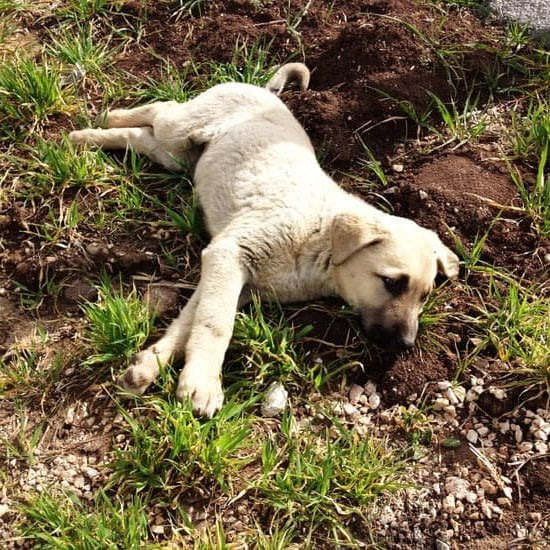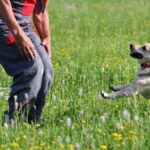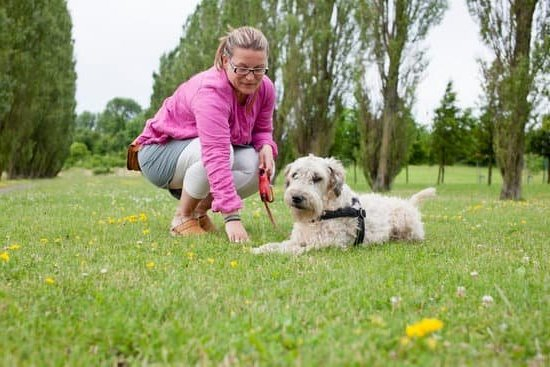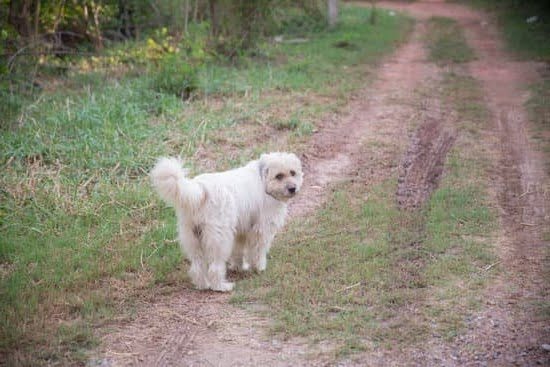Airport security is a top priority for ensuring the safety of travelers and airline staff. One crucial aspect of airport security is the use of specially trained dogs to detect drugs, explosives, and other contraband. These highly skilled K9 units play a vital role in keeping airports safe and secure. In this article, we will explore the extensive training process that airport dogs undergo to become proficient in their roles.
The selection and training of airport dogs involves careful consideration of breed characteristics, obedience training, specialized detection skills, scent detection techniques, behavioral training, and real-life scenario practice. Each step in the training process is essential for developing well-rounded and effective K9 units that can successfully contribute to airport security measures.
In the following sections, we will delve into the different aspects of how airport dogs are trained, from selecting the right breeds to maintaining their health and well-being. Understanding the rigorous training process behind these exceptional animals will provide insight into the crucial role they play in ensuring a safe and secure environment within airports.
Selecting the Right Breeds for Airport K9 Units
Airport security and safety heavily rely on the keen senses and abilities of K9 units. When it comes to selecting the right breeds for airport K9 units, there are several factors to consider. While any breed can potentially be trained for airport work, certain breeds are better suited for the task due to their instincts, temperament, and physical attributes.
One of the key considerations when choosing a breed for airport K9 units is their natural ability to detect scents. Breeds such as German Shepherds, Belgian Malinois, Labrador Retrievers, and Springer Spaniels are commonly selected for their exceptional sense of smell. These breeds have a strong drive to track scents and exhibit high levels of focus and energy, making them well-suited for scent detection work at airports.
Another important factor in selecting breeds for airport K9 units is their overall temperament and behavior. The selected breeds must be able to handle the stress and stimuli of an airport environment without becoming overly anxious or aggressive. Additionally, they must be friendly and adaptable enough to interact with passengers and airport staff in a calm and non-threatening manner.
In addition to scent detection abilities and temperament, physical attributes also play a role in selecting the right breeds for airport K9 units. Dogs that are agile, athletic, and possess good stamina are preferred for their ability to cover large areas efficiently during patrols or searches. Furthermore, the size of the dog may also be considered based on the specific tasks they will be performing at the airport.
Basic Obedience Training for Airport Dogs
Basic obedience training is a crucial part of the preparation for airport K9 units. Before dogs can move on to specialized training for detecting drugs and explosives, they must first master essential commands such as sit, stay, come, and heel. This foundation of obedience is essential for ensuring that airport dogs can function effectively in high-stress and fast-paced environments.
During basic obedience training, airport dogs are taught to respond to both verbal commands and hand signals from their handlers. They also learn leash manners and how to walk calmly on different surfaces without getting distracted or agitated. This level of training helps airport dogs to be more focused and responsive when they transition to more advanced detection work.
One important aspect of basic obedience training for airport dogs is the establishment of a strong bond between the dog and its handler. This bond is built through positive reinforcement techniques such as praise, treats, and play. The relationship between the dog and its handler is crucial for effective communication during all aspects of the dog’s work at the airport, including scent detection and behavioral response in real-life scenarios.
| Training Technique | Description |
|---|---|
| Verbal Commands | Dogs are taught to respond to specific words or phrases given by their handlers. |
| Hand Signals | Dogs learn to understand and act upon physical signals given by their handlers, without needing verbal cues. |
| Bonding Exercises | Handlers engage in activities that strengthen the bond with their K9 partner, such as playtime and positive reinforcement. |
Specialized Training for Detecting Drugs and Explosives
Understanding the Role of Airport Dogs in Drug and Explosive Detection
Airport dogs play a crucial role in detecting drugs and explosives, helping to keep airports safe from potential threats. These highly trained K9 units are able to detect even the smallest traces of narcotics and explosive materials, making them an invaluable asset to airport security teams.
Training Methods for Drug and Explosive Detection
So, how are airport dogs trained to detect drugs and explosives? The training process typically involves teaching the dogs to recognize the scents of various substances through positive reinforcement techniques. Dogs are initially trained to identify a specific odor by associating it with a reward, such as food or playtime. As they become proficient in recognizing the scent, their training progresses to more complex scenarios and environments.
Simulated Scenarios and Practical Exercises
To ensure that airport dogs are well-prepared for real-life situations, they undergo rigorous simulated scenarios and practical exercises. This may include mock drills where trainers hide illicit substances in luggage or cargo, allowing the dogs to practice their detection skills. Additionally, regular practice runs in airport environments familiarize the dogs with the sights, sounds, and smells they will encounter on duty.
By providing specialized training for drug and explosive detection, airport dogs are equipped with the skills necessary to effectively fulfill their vital role in maintaining airport security.
Scent Detection Training Techniques
Airport dogs play a crucial role in maintaining the security and safety of airports around the world. One of the key aspects of their training is scent detection, which involves teaching them to identify specific odors such as drugs and explosives. But how are airport dogs trained to develop this specialized skill?
The process starts by exposing the dogs to various scents in controlled environments. Trainers use a method called “imprinting,” where the dog associates a particular smell with a positive experience, such as receiving treats or praise. This creates a strong connection in the dog’s mind between the target odor and a reward, laying the foundation for further training.
Once the initial association is established, airport dogs undergo rigorous training to recognize and locate specific scents in different situations and environments. This includes practicing with different types of containers, vehicles, and cargo, preparing them for real-life scenarios they may encounter while on duty at the airport.
| Training Method | Description |
|---|---|
| Imprinting | Dogs associate target odors with positive experiences |
| Real-life Scenario Training | Practice with different environments and situations |
In addition to traditional obedience training, scent detection techniques involve continuous practice, reinforcement, and ongoing evaluation to ensure that airport dogs are proficient in detecting potential threats. Trainers also utilize innovative tools such as scent-detection kits and simulations to enhance the skills of these highly specialized canines.
The dedication and expertise of trainers combined with the natural abilities of certain dog breeds make it possible for airport dogs to perform their essential roles within airport security protocols effectively. Through careful training and ongoing support, these remarkable animals contribute significantly to maintaining the safety and well-being of travelers worldwide.
Behavioral Training and Socialization for Airport Dogs
Airport dogs play a crucial role in maintaining the security and safety of airports around the world. In order to fulfill their duty effectively, airport dogs undergo rigorous training in various areas including behavioral training and socialization. This segment will delve into the specific techniques and methods used to train airport dogs in terms of behavior and social interactions.
When it comes to behavioral training, airport dogs are taught to exhibit certain desirable behaviors in different scenarios. This involves teaching them obedience, self-control, and discipline. One common method used is positive reinforcement, where desired behaviors are rewarded with treats or praise. Additionally, airport dogs are trained to remain calm and focused even in stressful or chaotic environments such as busy terminals or during security checks.
Socialization is equally important for airport dogs as they need to interact with a wide range of people including passengers, airport staff, and security personnel. This helps them become accustomed to various human behaviors and body language signals. Through regular exposure to different social situations, airport dogs learn how to remain calm and composed while being surrounded by strangers.
To achieve these goals, trainers use a variety of techniques including:
- Exposing the dogs to different environments
- Encouraging positive interactions with strangers
- Teaching the dogs how to ignore distractions
- Employing obedience commands in social settings
By utilizing these methods, airport K9 units ensure that their dogs are well-behaved, adaptable, and able to work efficiently under any circumstances.
Real-Life Scenarios
Airport dogs undergo extensive training to ensure they are prepared for real-life scenarios in their role as security K9 units. This involves mock drills and practice runs that simulate the environment and situations they may encounter while on duty. These drills are essential for testing the skills and abilities of airport dogs in detecting drugs, explosives, and other illegal substances.
During mock drills, airport dogs are exposed to different environments such as airports, cargo facilities, and passenger areas. This allows them to familiarize themselves with the surroundings and develop a level of comfort in these settings. Handlers create scenarios that mimic potential threats or suspicious activities, prompting the dogs to use their trained senses to detect any contraband or dangerous substances.
In addition to mock drills, practice runs are also conducted to further reinforce the training of airport dogs. These runs involve simulating real-life situations where the dogs are tasked with locating hidden drugs or explosives within designated areas. Practice runs allow handlers to assess the accuracy and proficiency of the airport dogs in detecting illicit items, providing valuable feedback for ongoing training and improvement.
- Simulated airport environments
- Familiarization with potential threats
- Reinforcement of detection skills
Maintaining the Health and Well-Being of Airport Dogs
Physical Fitness and Exercise
One crucial aspect of maintaining the health and well-being of airport dogs is ensuring they are physically fit. Regular exercise is essential to keep these K9 units in top shape, as they often need to cover large areas of the airport in their line of duty. Handlers typically engage them in activities such as obedience training, agility exercises, and scent detection drills to ensure they remain active and agile.
Nutrition and Grooming
Proper nutrition is also vital for airport dogs, as it directly impacts their overall health. K9 units are usually fed high-quality, specialized diets to meet their specific nutritional needs. Additionally, regular grooming sessions are scheduled to keep their coats clean and healthy, which helps prevent skin issues or discomfort that could affect their performance.
Medical Care and Check-Ups
Regular medical check-ups are a priority for airport dogs to identify any health concerns early on. Vaccinations, parasite control, dental care, and other necessary treatments are all part of maintaining their well-being. Handlers work closely with veterinarians to ensure that the K9 units receive proper care and attention. It’s essential for these dogs to be in optimal health so they can continue fulfilling their critical roles at airports effectively.
Conclusion
In conclusion, well-trained airport dogs play a crucial role in maintaining security and safety within airports. The training process for these K9 units involves careful selection of the right dog breeds, basic obedience training, specialized detection training for drugs and explosives, scent detection techniques, behavioral training, and exposure to real-life scenarios through mock drills and practice runs.
All these aspects work together to ensure that airport dogs are equipped with the skills needed to effectively carry out their duties and contribute to the overall security of airport facilities.
The question of ‘how are airport dogs trained‘ is an important one, as it sheds light on the rigorous process that goes into preparing these canine units for their roles. It is not simply a matter of teaching them a few commands; rather, it involves comprehensive training programs that cover various aspects such as obedience, scent detection, and behavior in different environments.
The dedication and expertise of the handlers and trainers who oversee this process are essential in shaping these animals into valuable assets for airport security.
Ultimately, a well-trained airport dog serves as a proactive measure against potential threats within airports. Their keen sense of smell and ability to pick up on suspicious scents make them invaluable in detecting illegal drugs or explosives that might otherwise go unnoticed.
Furthermore, their presence alone can act as a deterrent to individuals with malicious intentions. Therefore, investing in the proper training and care for airport dogs is not only beneficial but also necessary for ensuring the safety and security of passengers and staff within airport premises.
Frequently Asked Questions
How Do They Train TSA Dogs?
TSA dogs are trained using positive reinforcement techniques to detect explosives and other dangerous substances. They are exposed to various odors during training and learn to alert their handlers when they detect these scents.
Do TSA Dogs Go Home With Their Handlers?
Yes, TSA dogs typically go home with their handlers at the end of each workday. This helps to establish a strong bond between the dog and its handler, which is important for effective teamwork in detecting potential threats.
How Do They Train Sniffer Dogs?
Sniffer dogs are trained using a reward-based system that reinforces their natural ability to detect specific scents. They are exposed to target odors and learn to indicate the presence of these scents through behaviors like sitting or signaling their handler.

Welcome to the blog! I am a professional dog trainer and have been working with dogs for many years. In this blog, I will be discussing various topics related to dog training, including tips, tricks, and advice. I hope you find this information helpful and informative. Thanks for reading!





